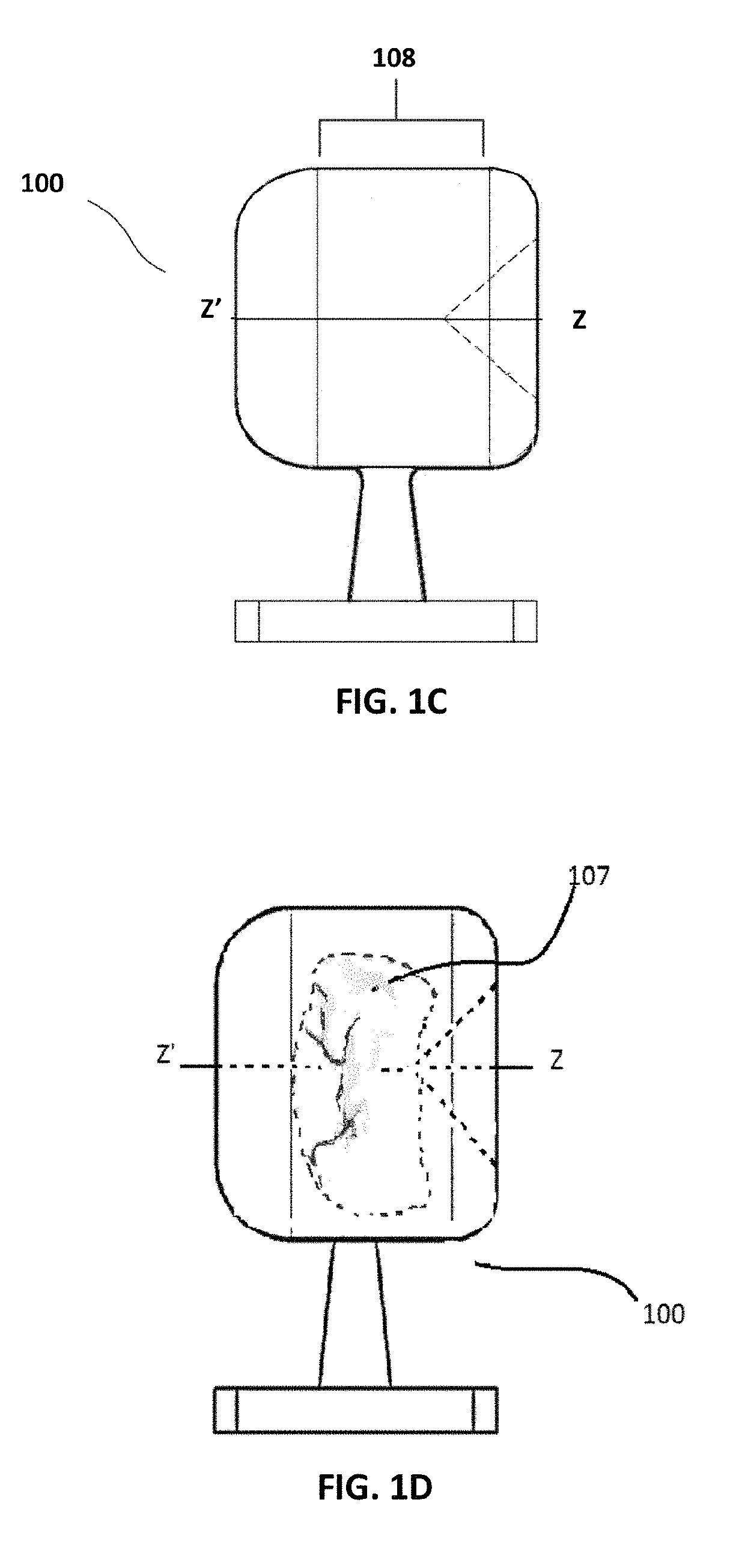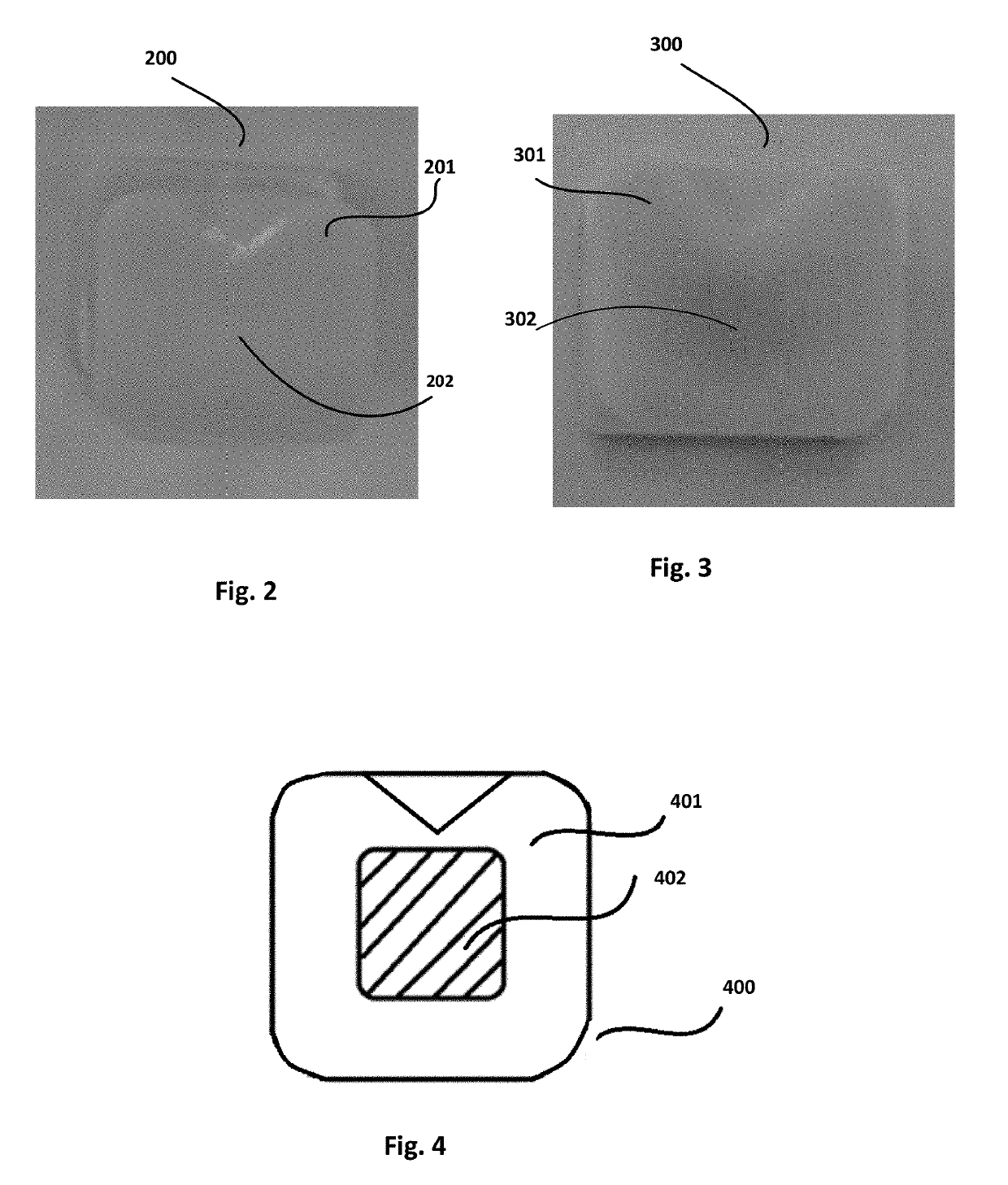Shaded zirconia ceramic material and machinable sintered ceramic bodies made therefrom
a technology of sintered ceramics and ceramic materials, which is applied in the field of machinable sintered ceramic bodies made of shaded zirconia ceramic materials, can solve the problems of sintered ceramic bodies used in chairside applications that cannot meet the requirements of all shades utilizing iron, erbium, and/or cobalt shading systems, and achieve uniform color and high flexural strength
- Summary
- Abstract
- Description
- Claims
- Application Information
AI Technical Summary
Benefits of technology
Problems solved by technology
Method used
Image
Examples
example 1
[0049]Shaded zirconia ceramic blocks were sintered to full theoretical density and testing for color properties.
[0050]Pressable, zirconia ceramic powder was obtained that comprised 3 mol % yttria-stabilized zirconia. The zirconia ceramic powder was doped with a coloring composition comprising terbium-, chromium-, erbium- and cobalt-containing compositions as a coloring agent. The ceramic powder comprised approximately 0.34 mass % of a mixture of terbium (III) nitrate hexahydrate and chromium (III) nitrate nonahydrate per gram of zirconia ceramic powder. The ratio of terbium ion to chromium ion was approximately 95:5 Tb:Cr by mass.
[0051]The shaded powders were pressed into blocks measuring approximately 98 mm diameter×20 mm height by isostatic pressing. Ceramic shapes similar to FIG. 1 were milled from these blocks and sintered to approximately full theoretical densities (approximately 6.08 g / cm3) according to the following sintering profile: milled blocks were placed in a sintering ...
examples 2-12
[0053]Shaded, sintered ceramic bodies were prepared from 4 mol % yttria-stabilized zirconia powder that was colorized with a mixture of metal-containing components of terbium and chromium as coloring agents. The shaded, sintered ceramic bodies were compared to shaded, sintered ceramic bodies made from ceramic powder comprising an iron-containing component as a coloring agent.
[0054]Ceramic powders were prepared in multiple shades according to Table 1, substantially according to the methods of Example 1. For each shade, a mixture of metal-containing components comprising Tb and Cr ions was provided having a metal ion ratio of approximately 94 to 6 of Tb to Cr, at multiple concentrations. For a given shade, a matching (color equivalent) ceramic material incorporating iron-containing components as a coloring agent was prepared that had a greater total metal ion concentration than the shade-equivalent ceramic materials shaded with a mixture of Tb- and Cr-containing coloring agents.
[0055]...
PUM
| Property | Measurement | Unit |
|---|---|---|
| mass ratio | aaaaa | aaaaa |
| thicknesses | aaaaa | aaaaa |
| temperatures | aaaaa | aaaaa |
Abstract
Description
Claims
Application Information
 Login to View More
Login to View More - R&D Engineer
- R&D Manager
- IP Professional
- Industry Leading Data Capabilities
- Powerful AI technology
- Patent DNA Extraction
Browse by: Latest US Patents, China's latest patents, Technical Efficacy Thesaurus, Application Domain, Technology Topic, Popular Technical Reports.
© 2024 PatSnap. All rights reserved.Legal|Privacy policy|Modern Slavery Act Transparency Statement|Sitemap|About US| Contact US: help@patsnap.com










